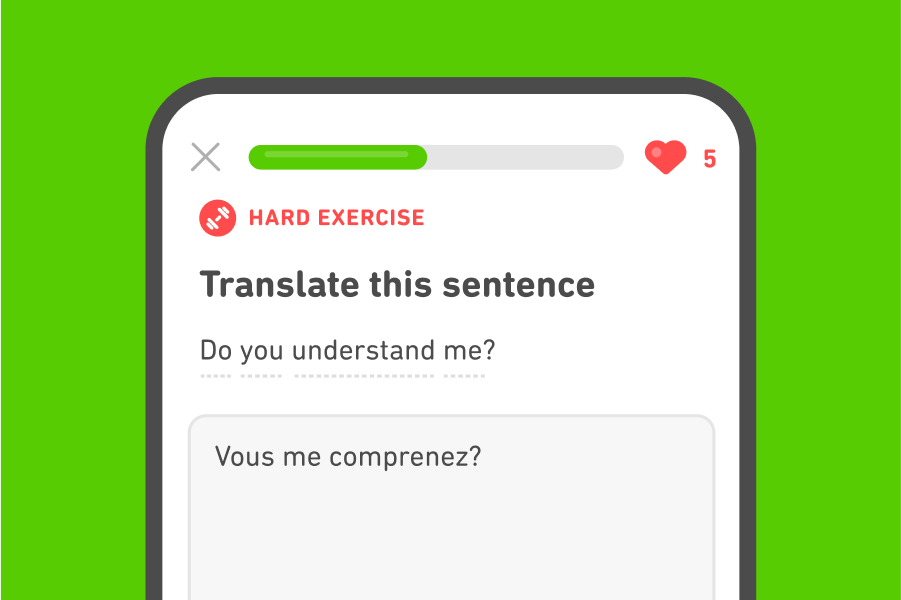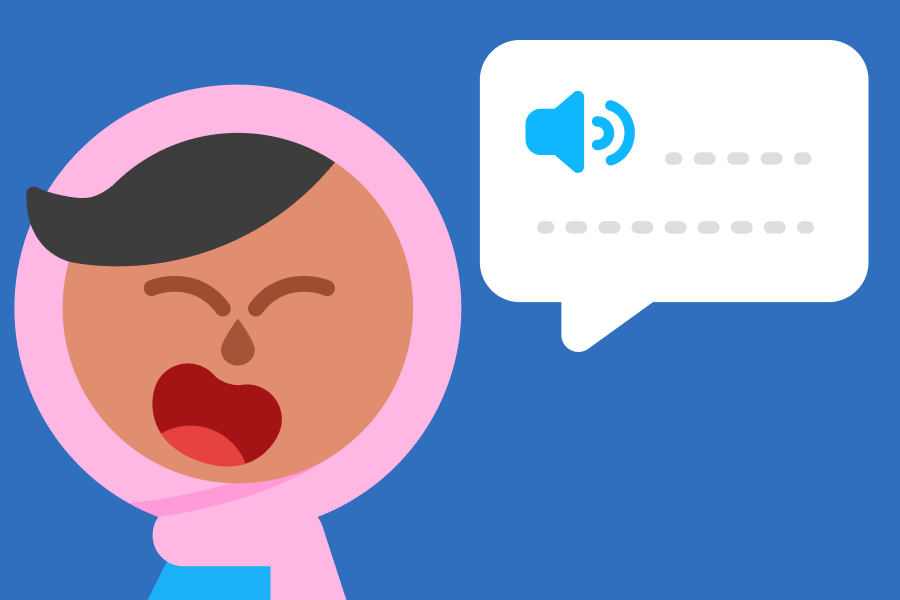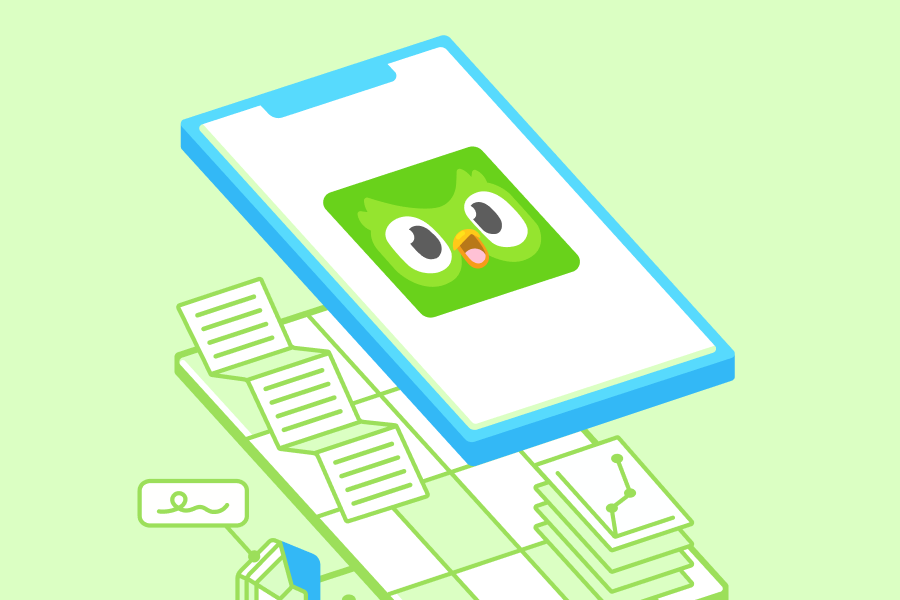At Duolingo, we know how important it is for our learners to study increasingly challenging lessons in order to build their language skills--and our learners know it, too. But that doesn't mean it always comes naturally; it's also natural to want to stick to what's comfortable!
Our team was on a mission to keep our learners' language progress on track. Specifically, we wanted to push each learner right to the limit of their knowledge--and then some. Teaching experts call this scaffolding: we use what you already know to teach you newer, more challenging material, and so we build up your language abilities.
To keep our learners moving ahead, we personalize our lessons, tailoring the difficulty level for each individual learner. For example, adaptive exercises respond to how well a learner is doing: if a learner is performing well in a lesson, our algorithm selects slightly more challenging exercises from the next skill level. This personalization keeps you at the forefront of your learning, although you might not even know it's happening!
Enter exercise indicators
Even though the adaptive exercises were a success and kept learners engaged, we wanted to do more: we wanted to communicate to learners what was happening and why it mattered for their progress. We decided to tell our learners, straight up, “this is a hard exercise,” and we did this by adding a small message, or indicator, at the top of the screen during these harder exercises.
| Standard exercise with no indicator ⤵️ | Exercise with a difficulty indicator ⤵️ |
|---|---|
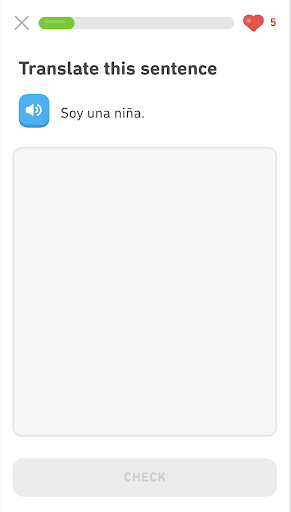 |
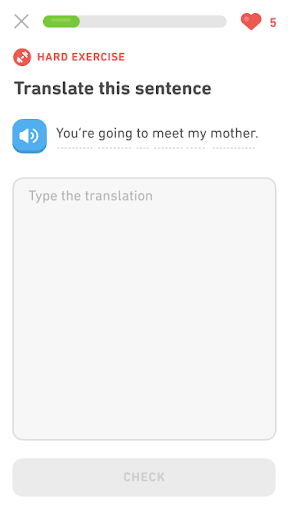 |
Our learners responded very positively to this transparency! They spent more time studying and therefore more time working on harder exercises that pushed their learning further. They were more likely to return to their lessons the next day. They were even more likely to sign up for a Duolingo Plus trial, unlocking more learning opportunities. During a user experience interview, one learner put it best: “The indicator raises the floor and the ceiling. If I make a mistake, I don’t feel as bad, because you warned me that it was hard. If I get it right, I feel proud.”
Chasing difficulty
With this new-found approach of keeping it real, we decided to draw back the curtain even further on another part of the course: skill levels. We carefully craft each level to achieve different learning objectives. For example, the first level of lessons get learners familiar with the new vocabulary and grammar being taught in the skill; the second emphasizes recognition through lots of reading and listening practice; the third prioritizes speaking and pronunciation; and so on.
Those earlier levels focus on encoding--helping learners get the new words and meanings into memory--and advanced levels give learners practice with retrieving those words from memory, which helps build strong connections in your brain. Those later levels are really important for learning to use the new language, especially in speaking, but learners are often most focused on moving down the course, not on leveling up. Gradually leveling up skills is the best way to study with Duolingo, so how could we motivate learners to do more of it?
Building on our insights from the indicators, we decided to highlight the value of leveling up with transparent communication about improved proficiency whenever a learner completed a level.

As in the case of indicators, this clear communication about learning value increased how much learners studied and how often they came back to keep learning. This time however, we noticed another exciting behavior: learners chased the harder content! When we explained to them the exact value in how they were spending their time, they leveled up more frequently and so saw more advanced exercises. We just needed to activate their intrinsic motivation so they remembered why they were on Duolingo in the first place!
The real reward
We are in such a lucky position serving learners who enjoy using our product for fun and to reach their personal goals. While we know that they love our gamification, they also keep their eye on the prize: language learning--and that’s the biggest reward. Happy learning, everyone!
Take on a new challenge, and download Duolingo on Apple or Google Play stores.
